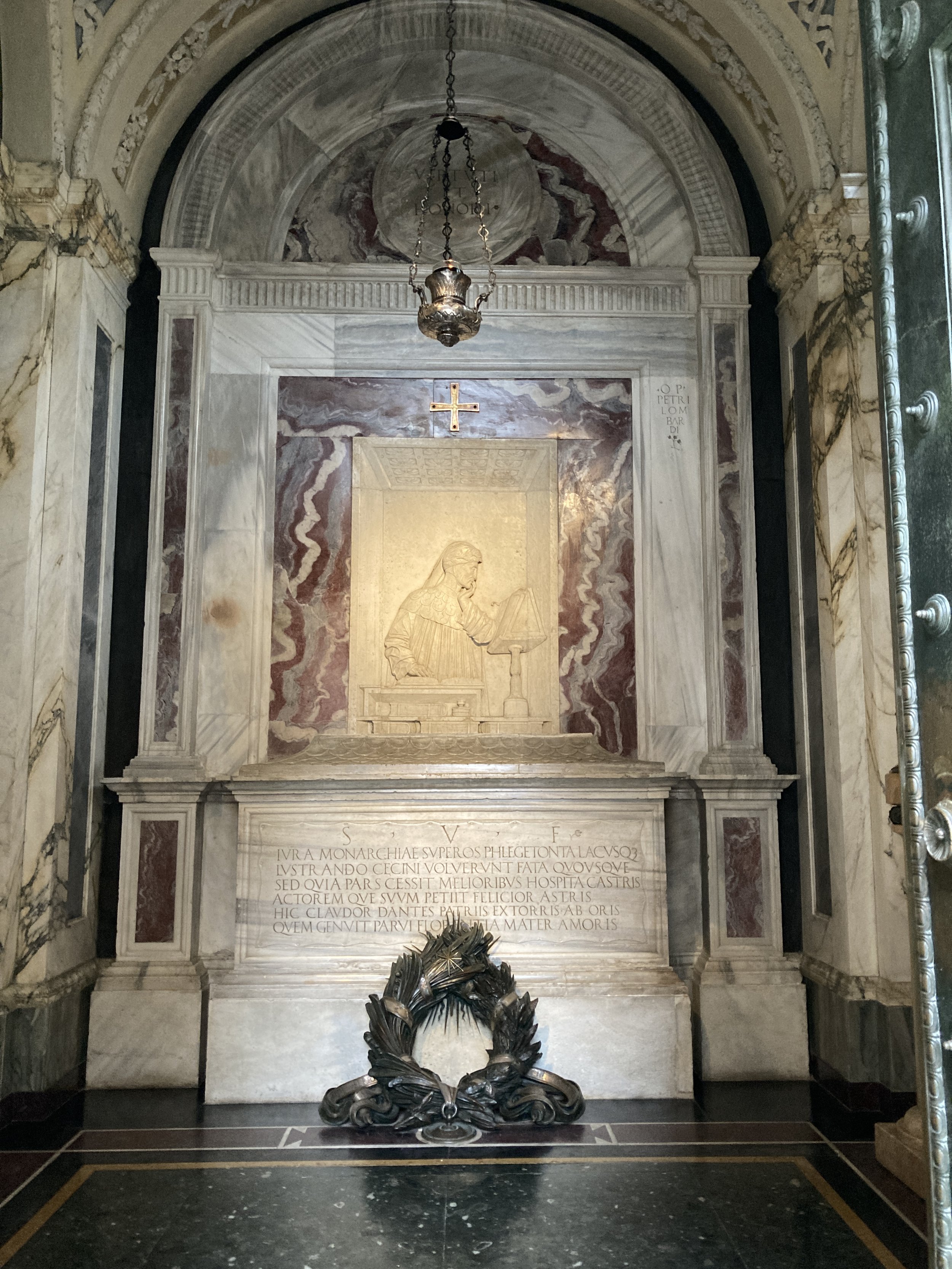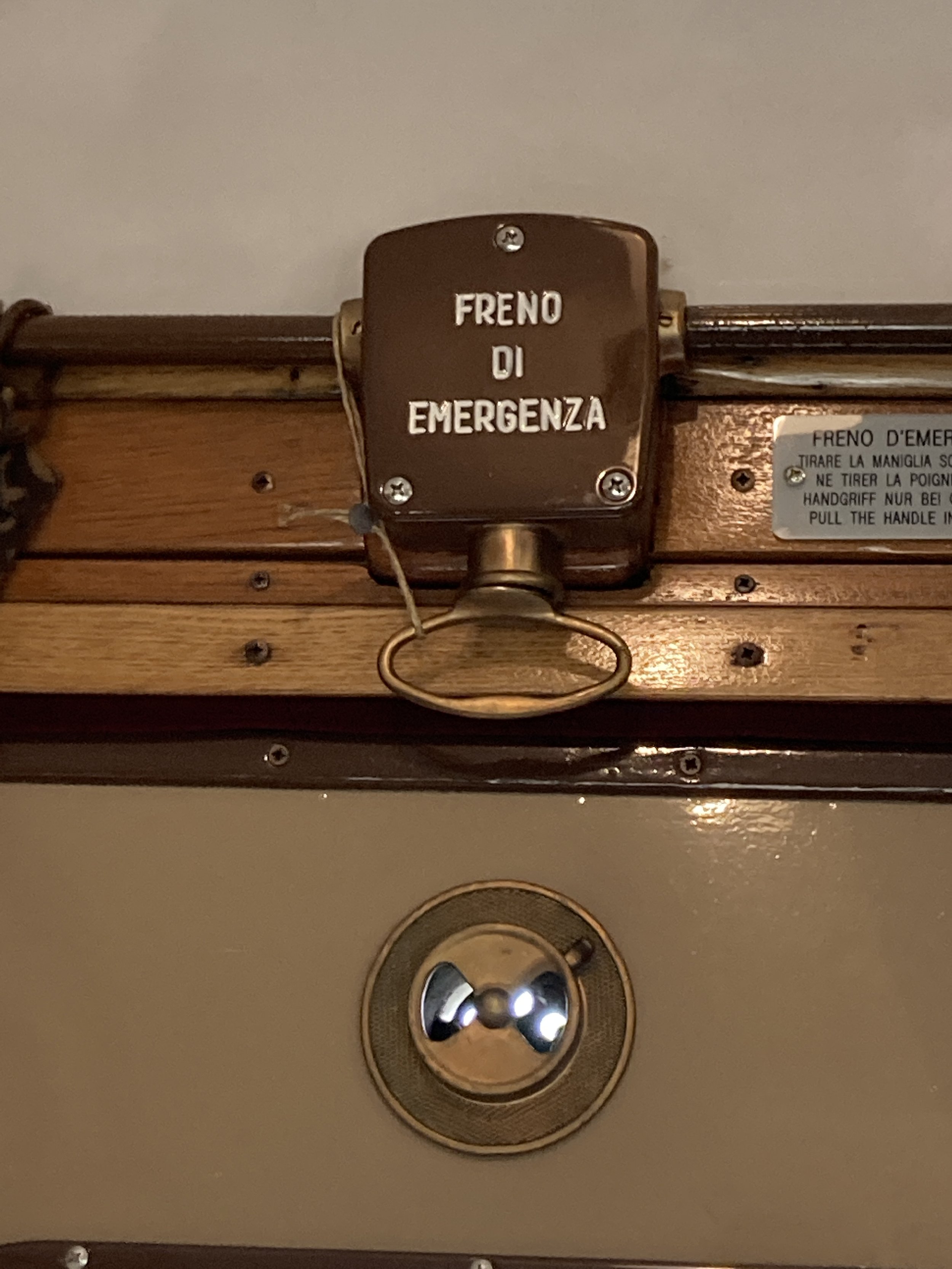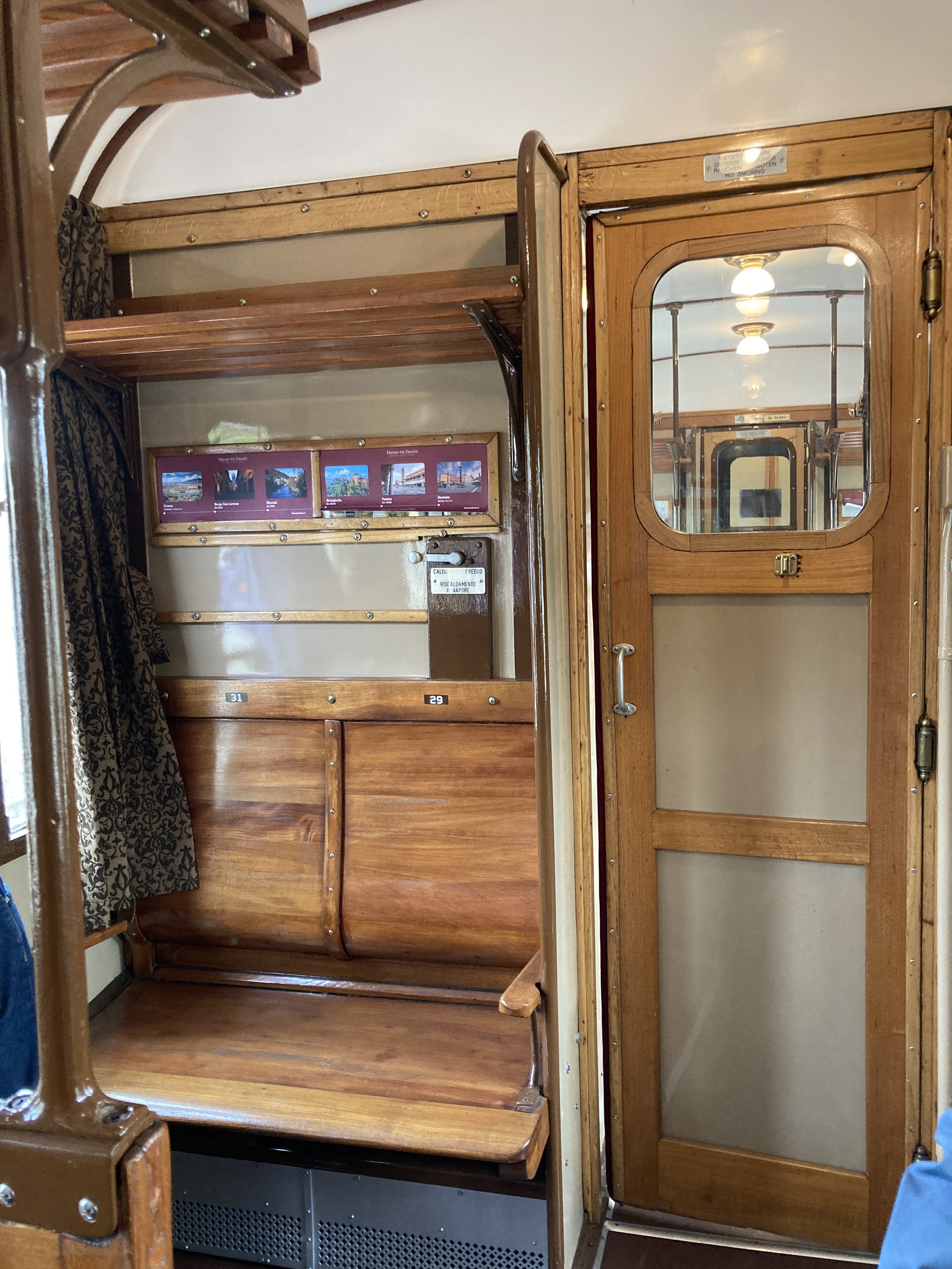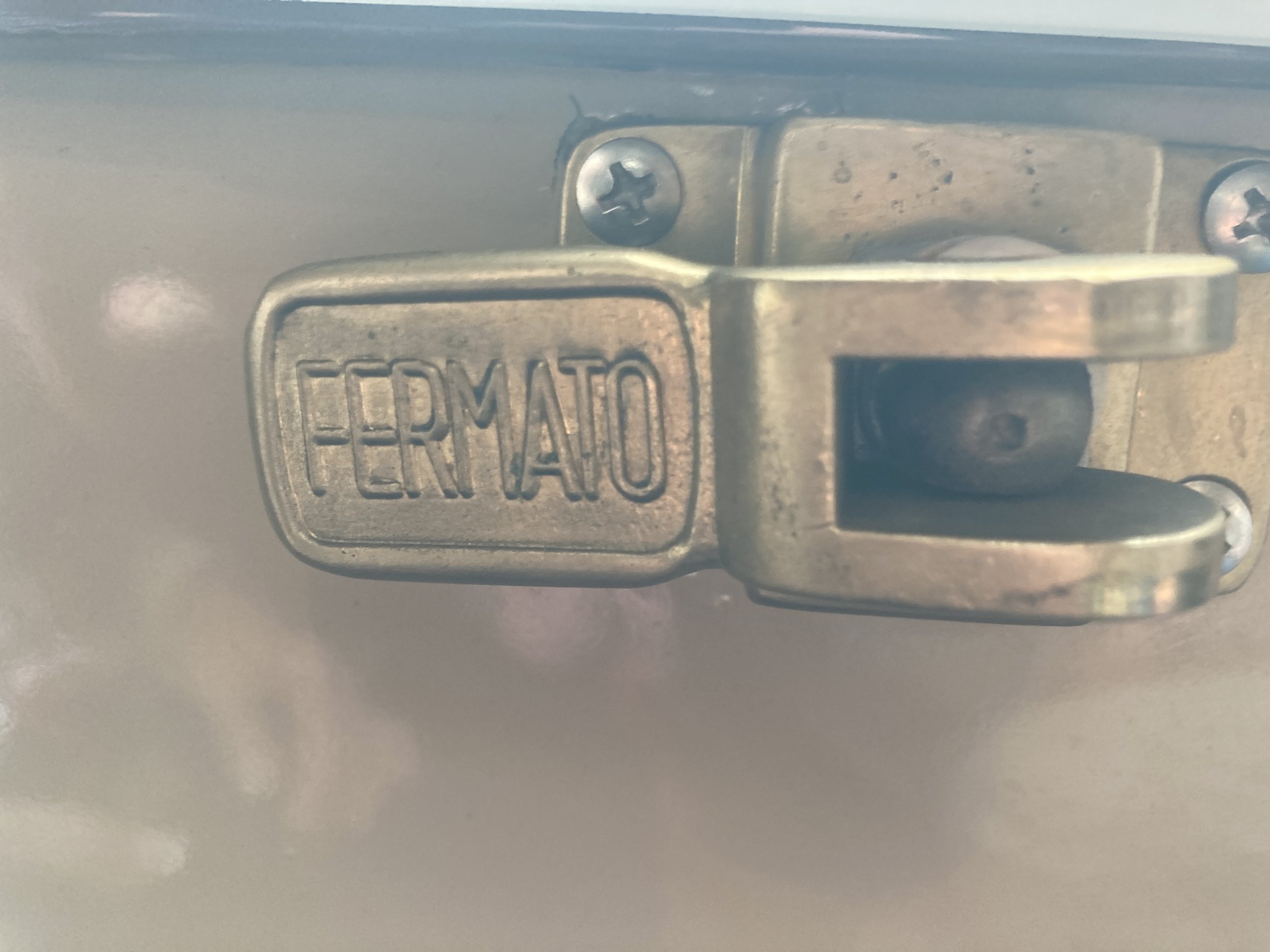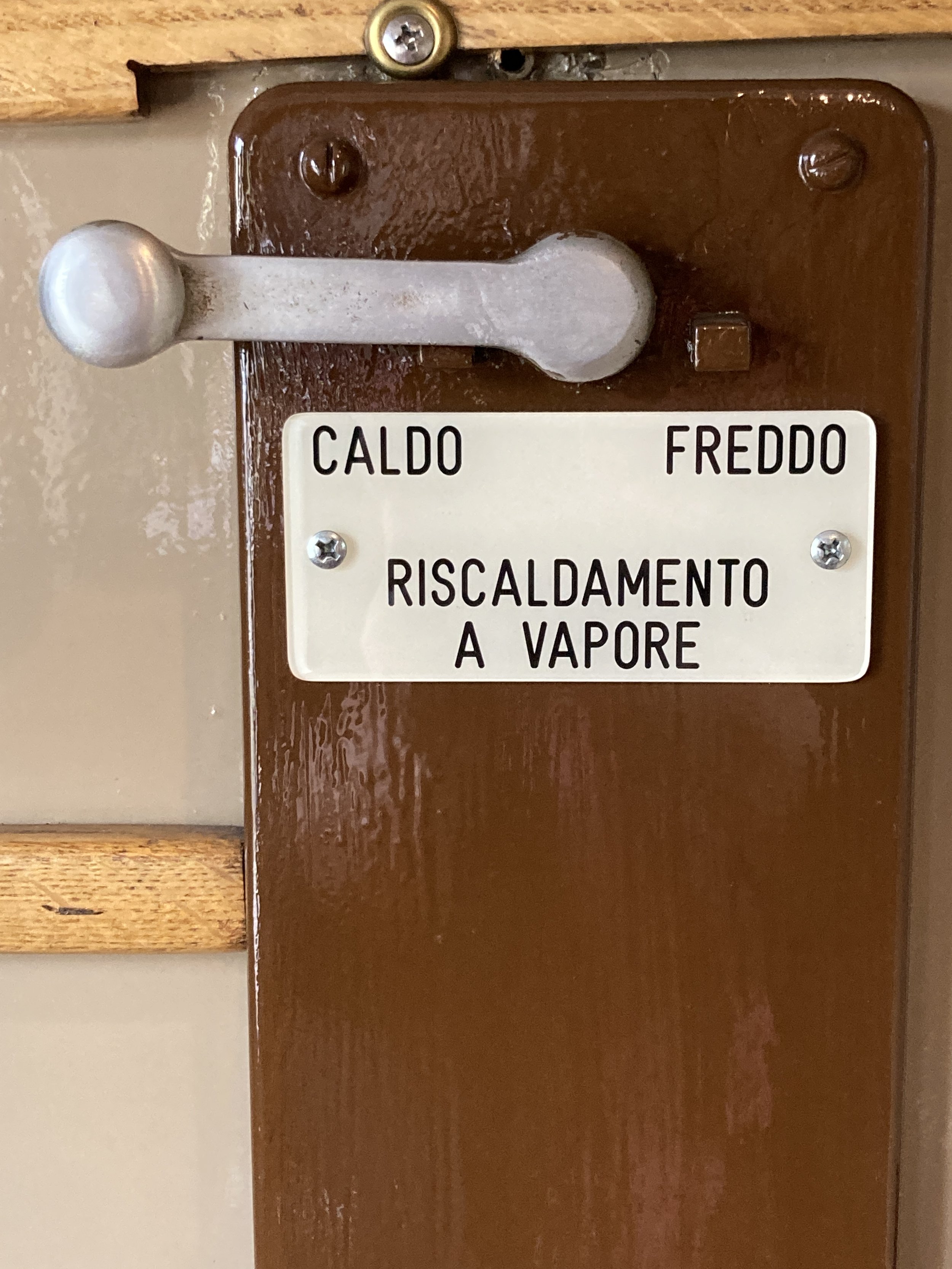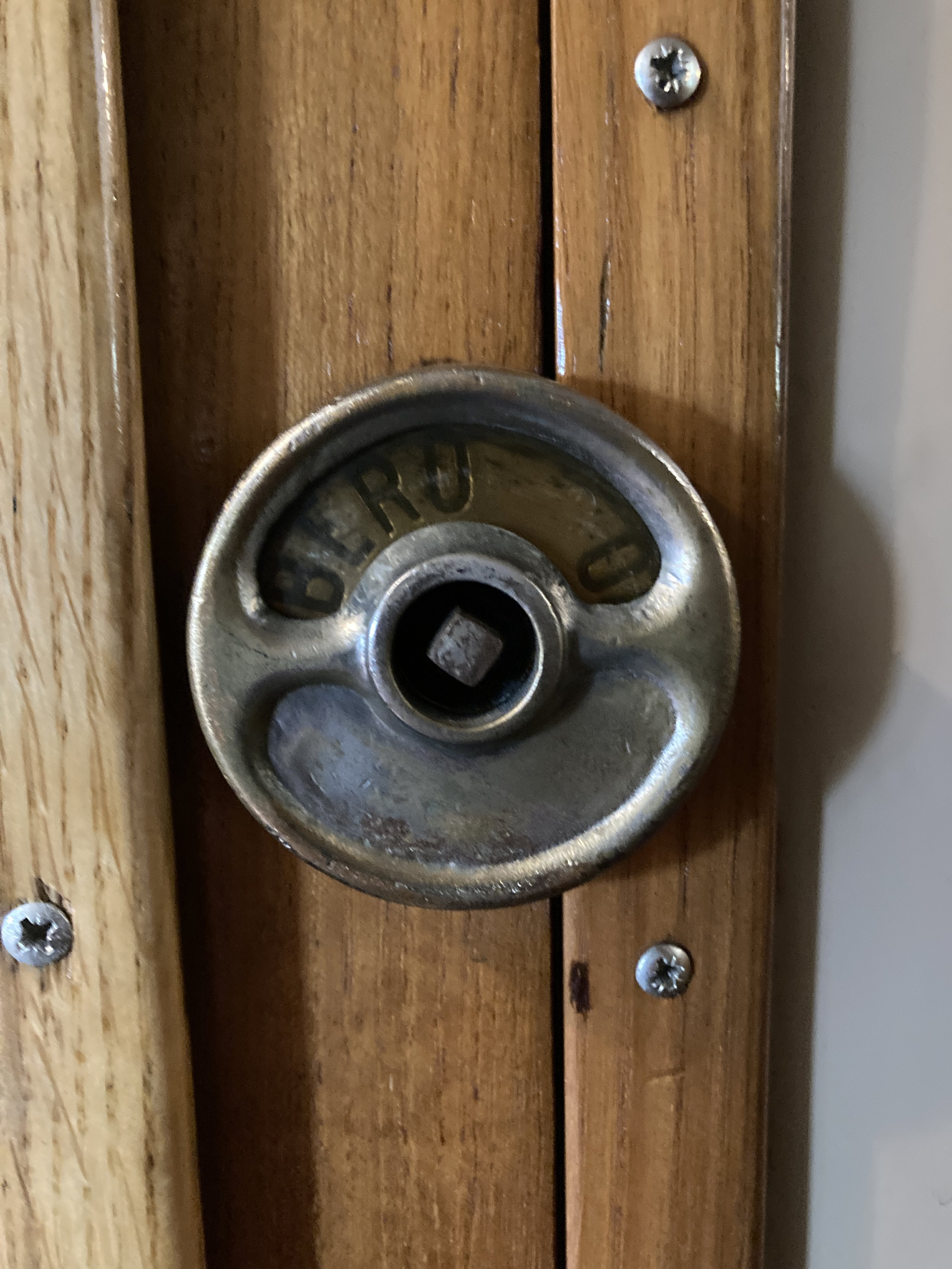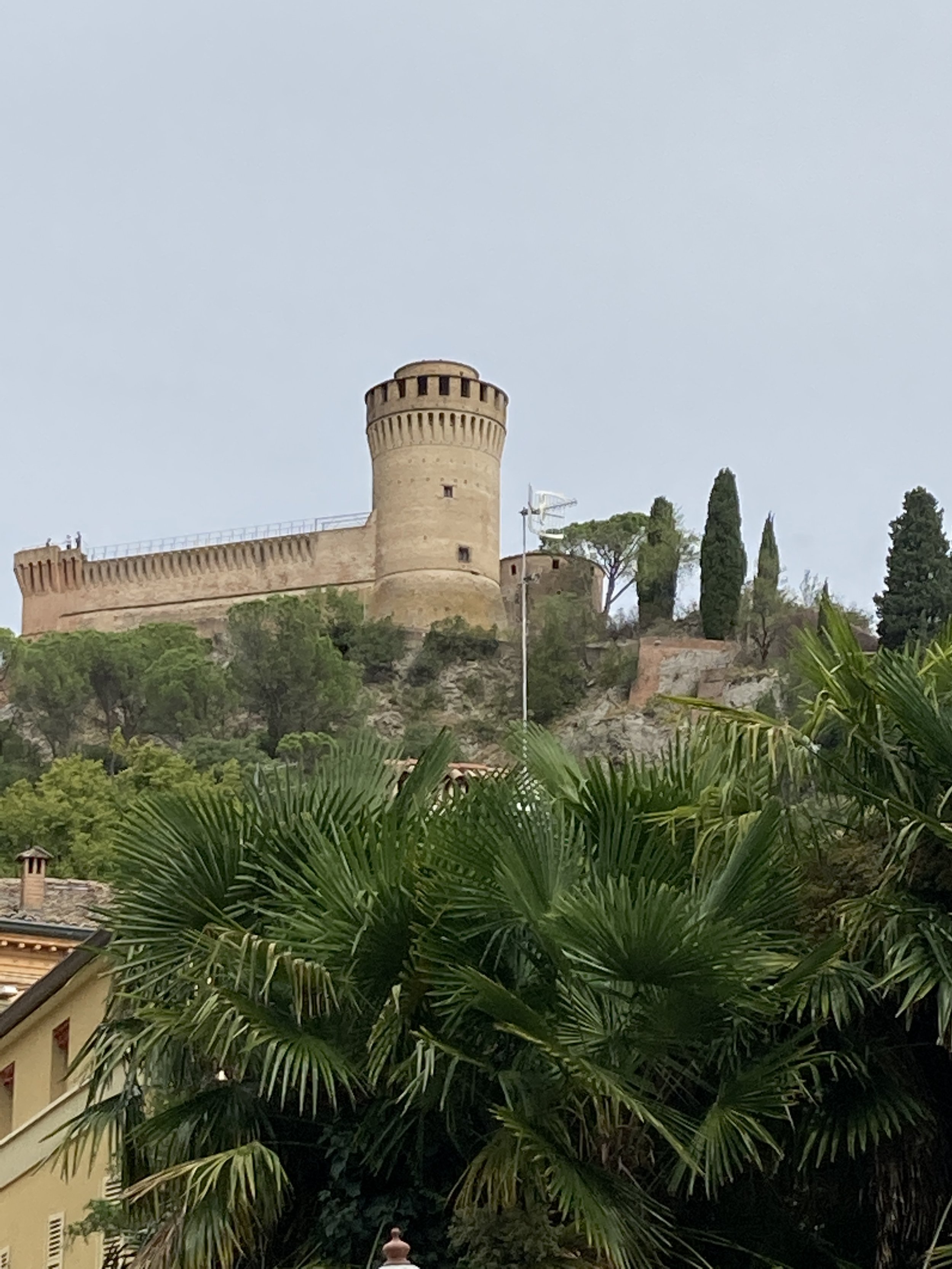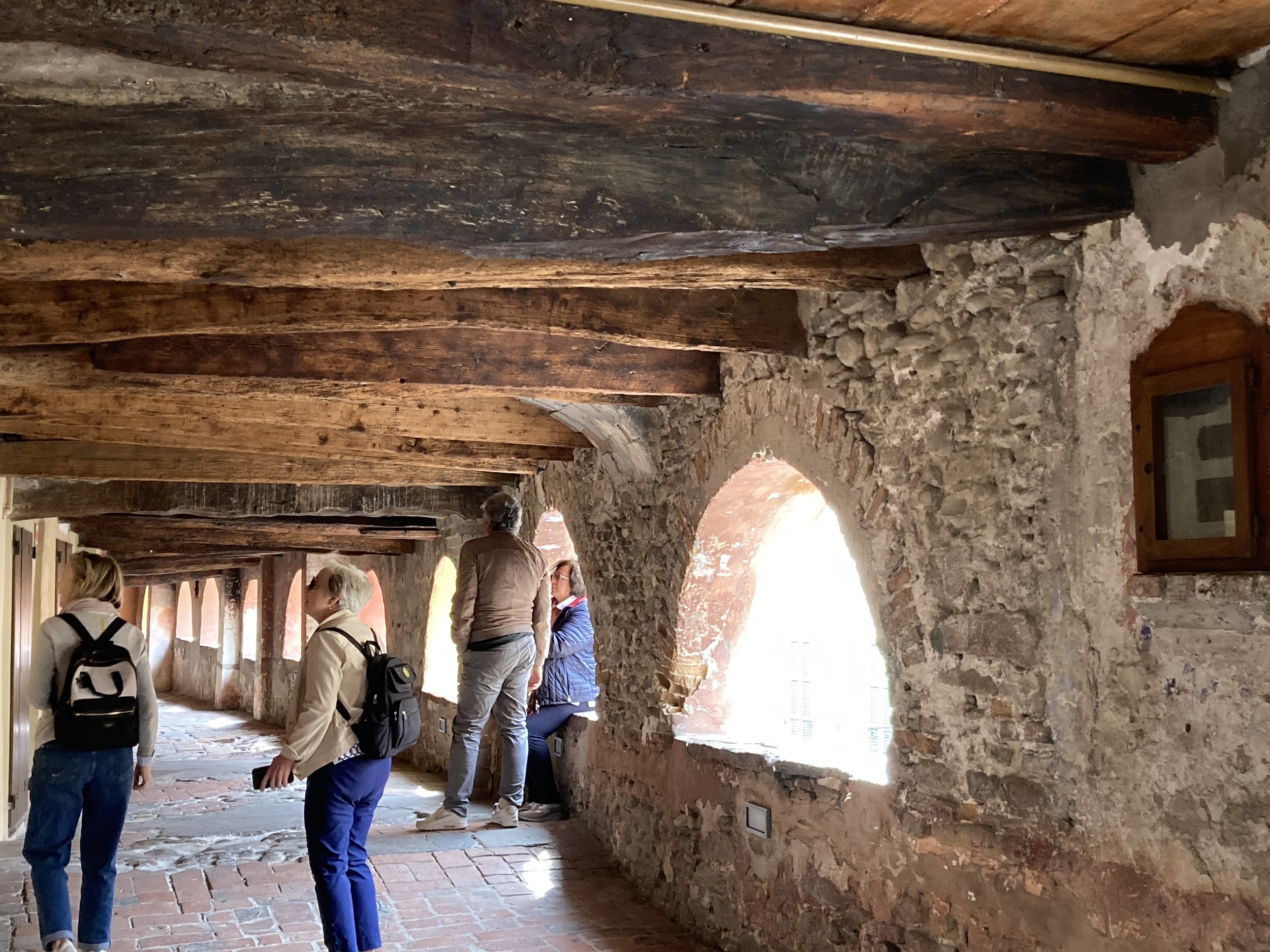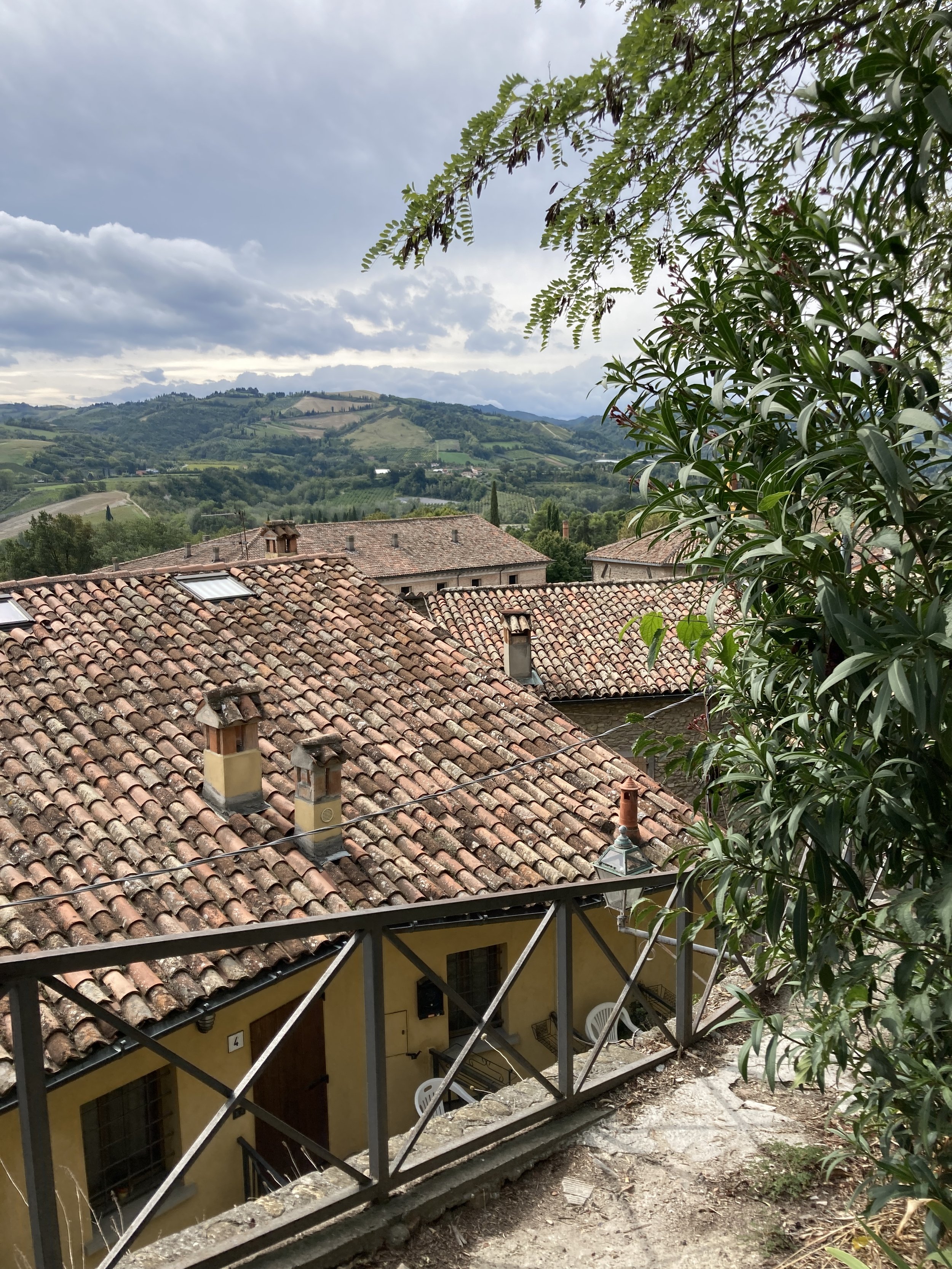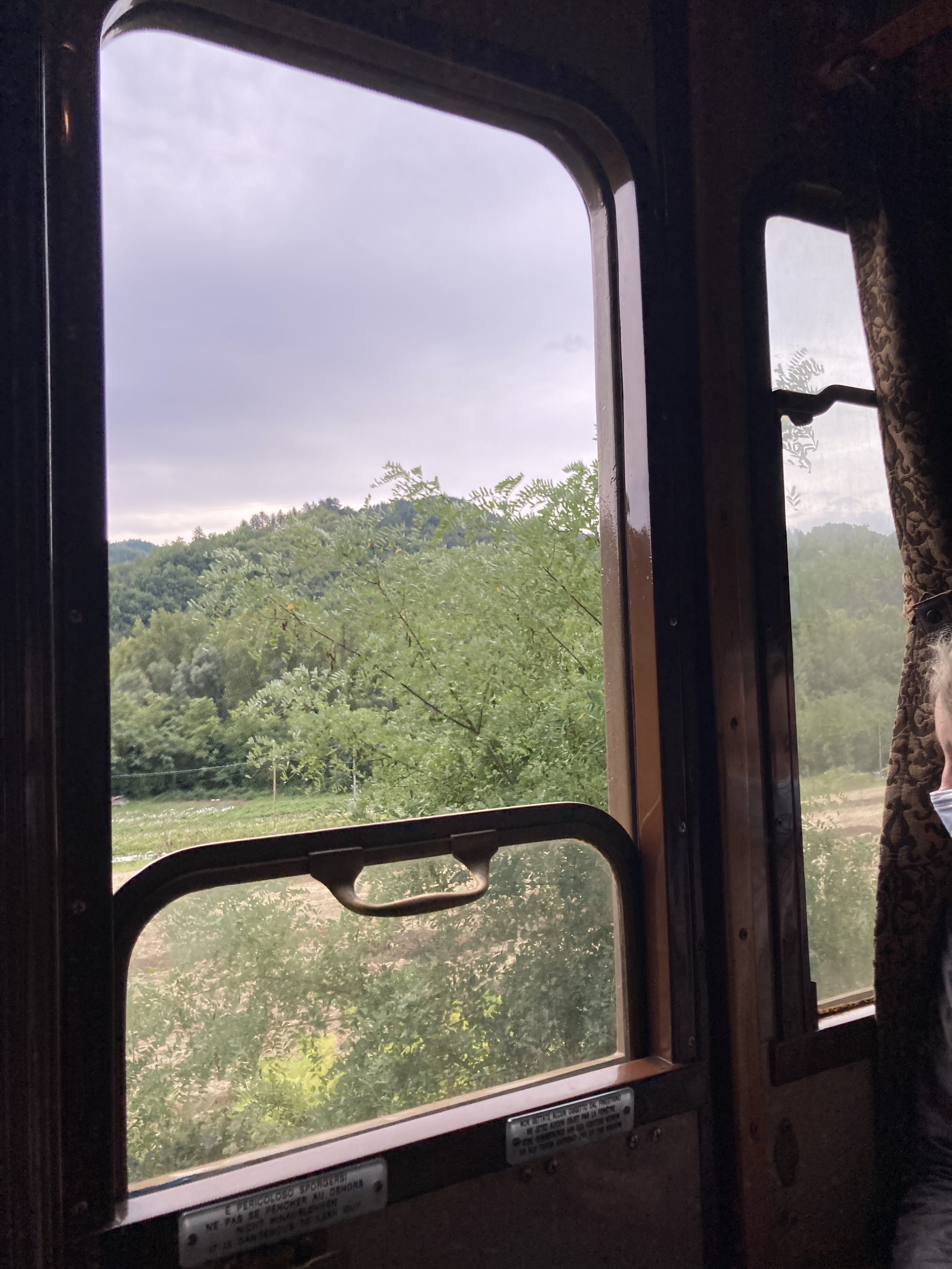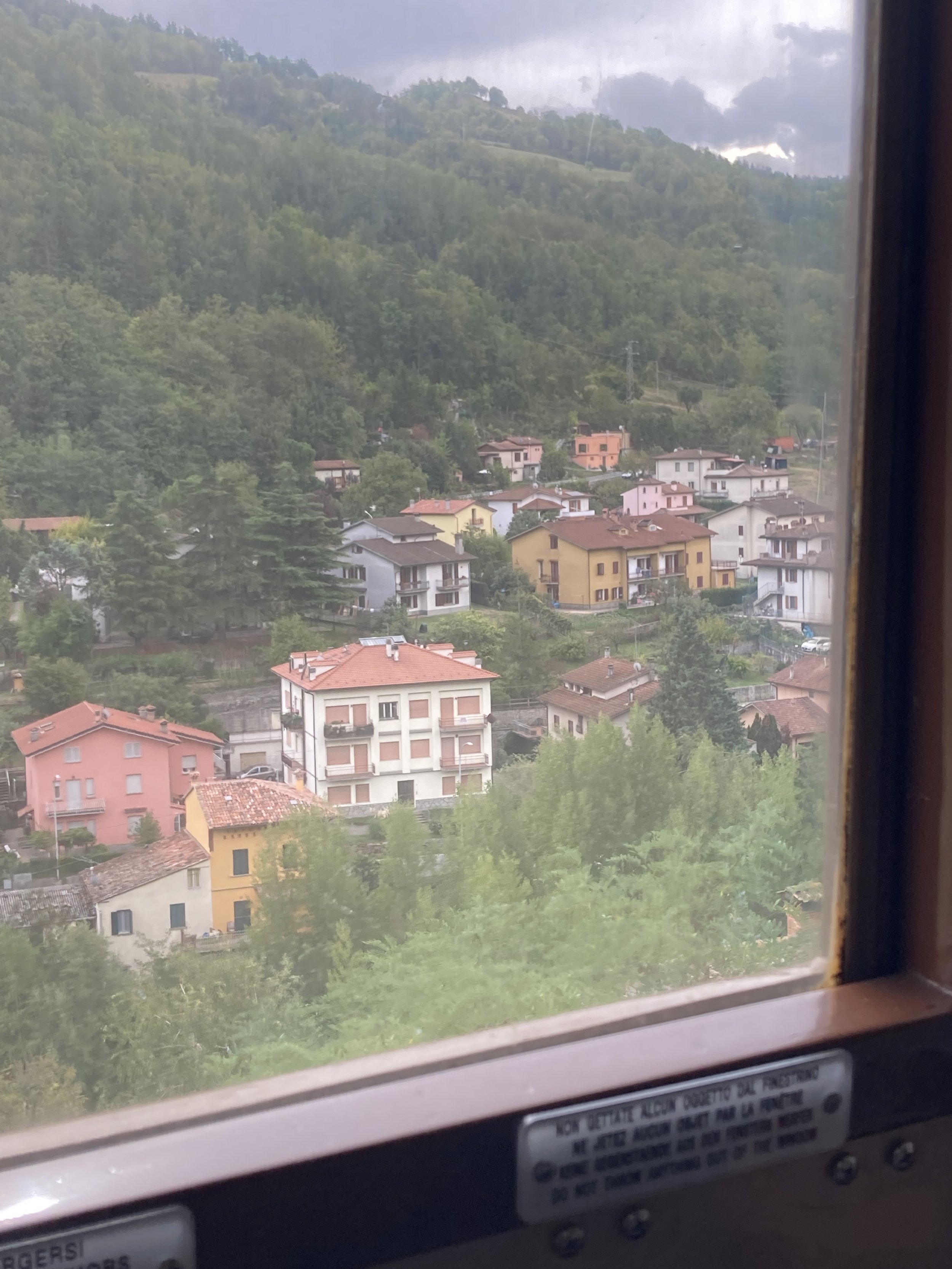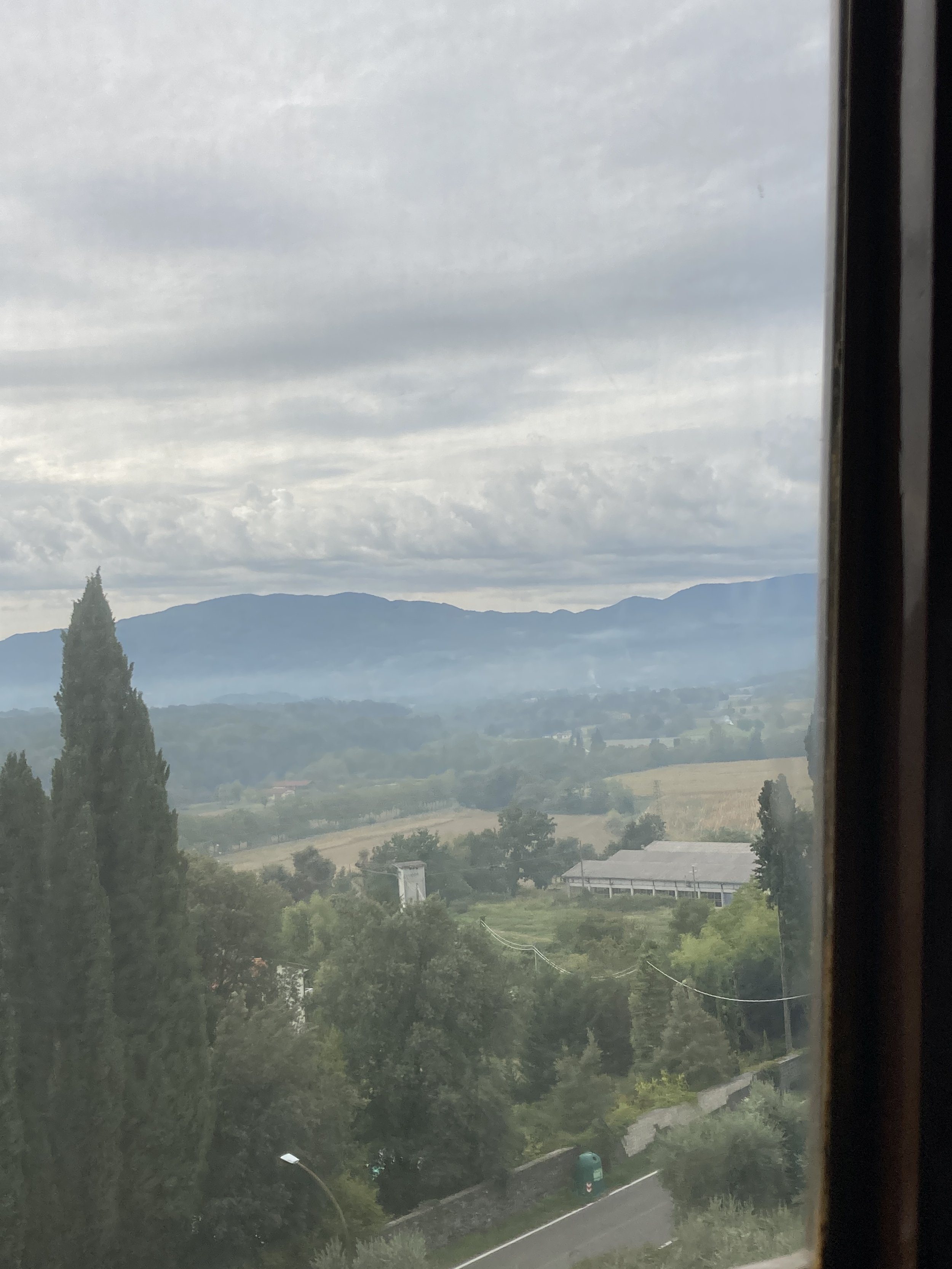Dante’s Train
A 4 person compartment in the vintage train’s 3rd class car. Today it is a wonderful spot for a ride on the Dante Train.
Dante, the most famous of all Italian poet philosophers, was born in Florence in the year 1265. He lived in Florence, married, fathered 4 children, and became a person of importance in the city of his birth. But by 1302 political rivalries and power struggles saw him banished from Florence. He faced a terrible fate should he return - death by being burned alive.
Leaving his family behind, he traveled throughout Italy and eventually settled in the city of Ravenna, where he wrote Paradiso. He died there of malaria in 1321 and was buried in the city. Some years after his death the cities of Florence and Ravenna began fighting over his remains.
Interior of Dante’s tomb in Varenna
Florence claimed that as Dante’s place of birth he should certainly rest there. Ravenna argued that since Dante lived the last part of his life, died, and was buried in Ravenna, he should always remain in that city. When the Florentines tried to reclaim the body some 200 years after his death (those Florentines just never give up!), they found his sarcophagus empty. His body was most likely removed and then hidden by Franciscan monks to keep it away from those pesky Florentines.
The monks never did reveal the hiding place and for more than 300 years Dante’s remains were lost. They were rediscovered in 1885 and briefly exhibited to the public before being placed inside his tomb. The remains have been moved several times to protect them during times of war, but thankfully never again misplaced. Today, Dante’s body lies once again in his peaceful small tomb near the Basilica of San Francesco in the center of Ravenna. Each year the Florentine’s send the oil that lights the lamp above the monument.
During his exile, Dante crossed the territory between Florence and Ravenna. The area, partly in Tuscany and partly in Emilia-Romagna, includes the Apennine hills, deep valleys, rivers, and forests full of chestnut trees. One thing is certain though – Dante definitely did not travel by train! The first trains didn’t arrive in Italy until 1839, about 500 years after his death.
So, how is it that just last week I rode Dante’s very own train (Il Treno di Dante) from Florence, through the landscape of Dante’s wanderings, to Ravenna? The train trip named for Dante was introduced in 2021, to celebrate the 700th anniversary of his death. The route was offered again this summer and fall.
The centoporte train during a stop-over in Brisighella. Likely Dante didn’t wear a mask during his travels, but in late September Italy still required them on trains. Thanks to Diana Nason for this photo.
The Treno di Dante is a restored “centoporte” (100 doors) train from the 1920’s. The small cars have compartments of 4 seats, each with its own door and windows. The interiors bring back an earlier, more gracious age of travel. The seats are wooden benches as upholstery was only found in first class, the trim is polished wood. The windows are curtained. The wooden luggage racks above each seat are spacious (and far more useful than the narrow racks found on modern trains). Many of the fittings are brass - door handles, curtain rods, window latches, vents above the windows, even the pull for the emergency brake. All of these things combine to make the train elegant. This is slow travel at its best. And if you are a train buff - well, this is a rare opportunity to ride a vintage Italian train.
The trip begins in Florence at Santa Maria Novella station. On route to Ravenna it travels through several small villages including Borgo San Lorenzo, Marradi, Brisighella as well as the larger town of Faenza. The trip includes one stop, sometimes in Faenza and other times in Brisighella. We had plenty of time to explore the medieval village of Brisighella on our trip during a 90 minute stop (photos below). After leaving Florence at 8:50 am we arrived in Ravenna a little after 1:00pm.
On board, a guide shares some Dante history along with information about the countryside through which the train travels and the small villages along the way. The narration is mostly in Italian, but the guide did provide an abbreviated version in English. The train moves just slow enough to appreciate the beautiful scenery along the route.
Dante himself made a surprise appearance, traveling through the cars in his red robes and talking with passengers. Still in exile, he didn’t join the train until after we left Florence.
There is no need to be a Dante scholar to enjoy this activity. It was a fun journey - a relaxing ride with lovely scenery, a beautiful historic train, a chance to explore Brisighella, and a dash of history too.
A couple of days in Ravenna at the end of the trip provided a chance to explore the city and learn more about its Dante connections. It is an fascinating city and oh wow - those mosaics! Look for more on Ravenna in upcoming blog posts.
The Dante Train runs this year through November 1st. I found no current information about whether there will be a 2023 season of the Treno di Dante.
Website: www.iltrenodidante.it
Tickets can also be booked through Get Your Guide. Website: getyourguide.com

